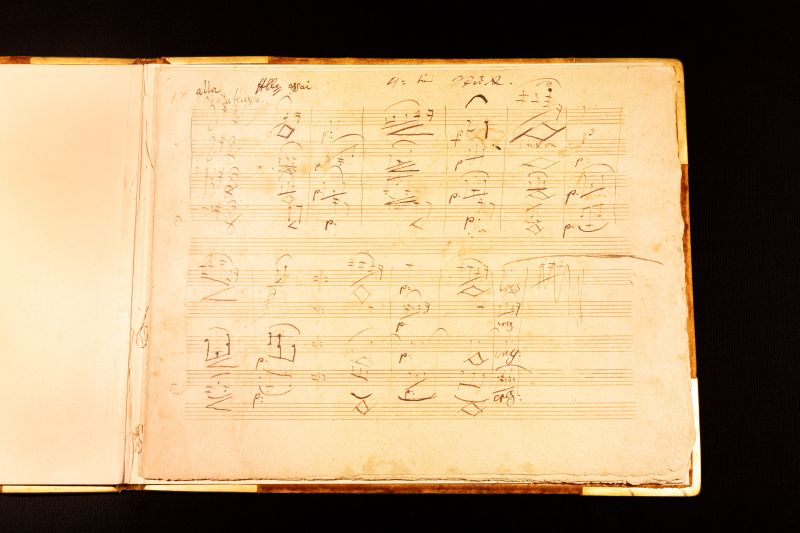The first million-dollar woman music director
mainDrew McManus has published his annual survey of maestro earnings, and there’s one notable omission*. But before we go into the small print let’s congratulate Marin Alsop on being the first woman conductor to pull down a £1 million salary. What’s more, it’s the first time Baltimore has ever paid seven digits for a conductor.

photo: Chris Christodoulou/Lebrecht Music&Arts
Here’s the top ten list of earners for the 2014/15 season:
1 Chicago Symphony: $2,776,869 (Riccardo Muti)
2 San Francisco Symphony: $2,715,815 (Michae Tilson Thomas)
3 Dallas Symphony: $2,657,139 (Jaap Van Zweden)
4 Los Angeles Philharmonic: $1,906,100 (Gustavo Dudamel)
5 New York Philharmonic: $1,672,450 (Alan Gilbert)
6 Cleveland Orchestra: $1,248,711 (Franz Welser-Möst)
7 Philadelphia Orchestra: $1,110,000 (Yannick Nézet-Séguin)
8 Saint Louis Symphony: $1,042,644 (David Robertson)
9 Baltimore Symphony: $1,015,937 (Marin Alsop)
10 Detroit Symphony: $828,591 (Leonard Slatkin)
Right, the small print:
Boston and Houston failed, for some reason, to report music director salaries, perhaps because both men were in their first year. Dallas posted a drop in Jaap Van Zweden’s earnings – he was top dog on a record $5.1 million last year – they may have found another way to shield them.
And one other big earner is simply missing.
*Christoph Eschenbach, in his last full season as music director of the National Symphony Orchestra, is not listed as one of the organisation’s five highest paid contractors. That could be because the fifth highest paid contractor was reported at $2,709,973 whereas Eschenbach’s compensation the previous season was $2,274,151.
Even so, says Drew, ‘this is the first time I’ve encountered a scenario where a multi-million dollar music director wasn’t included on a 990 due to legitimately not being the five highest paid independent contractors.’
More details here.






Why the Genius on Flame isn’t on the list? That’s very weird.
Eye watering. How does this compare to what the top European orchestras pay their chief conductors (sometimes the same people)?
Are there any reports on how the salaries of conductors compare with the total spending on orchestra musicians or individual musician salaries?
Base Pay of the 13 highest paying US orchestras* during the 2014/15 season (numbers provided by the International Conference of Symphony and Opera Musicians):
1 Los Angeles Philharmonic: $153,400
2 Chicago Symphony Orchestra: $151,320
3 San Francisco Symphony Orchestra: $150,454
4 Boston Symphony Orchestra: $142,896
5 New York Philharmonic: $141,113
6 National Symphony Orchestra: $136,136
7 Philadelphia Orchestra: $128,700
8 Cleveland Orchestra: $127,504
9 Pittsburgh Symphony Orchestra: $107,117
10 Cincinnati Symphony Orchestra: $103,500
11 Minnesota Orchestra: $102,908
12 Houston Symphony Orchestra: $92,040
13 Dallas Symphony Orchestra: $90,814
And for further comparison, the salaries of the ten highest paid Concertmasters of US orchestras* for the same season (numbers provided by Drew McManus):
1 New York Philharmonic: $615,924
2 San Francisco Symphony: $563,745
3 Los Angeles Philharmonic: $554,209
4 Chicago Symphony: $549,794
5 Cleveland Orchestra: $503,573
6 Boston Symphony: $478,935
7 Philadelphia Orchestra: $385,817
8 National Symphony: $368,467
9 Pittsburgh Symphony: $316,961
10 Baltimore Symphony: $297,072
*The surveys did not include opera/ballet orchestras.
Any chief conductor who’s paid over a million, regardless of gender or nationality, is part of the problem, not the solution.
As famous conductors go, Honeck may be the best value for money, with a salary of $504,599 in Pittsburgh.
In addition to fees, it would be very interesting to know the number of weeks each conductor works under their contracts. Only with that information can a true comparison can be made, I’d have thought.
Exactly.
Brava for Ms Alsop. She is worth every penny paid. I do not know if any of the other stick swingers support their local community like she does, but Mss Alsop helped to start OrchKids here in Baltimore to address arts inequality in our city including a $100K gift to kick-start the initiative.
That money should be used to better the salaries of the musicians who do the hard grind every day, regardless of injury, fatigue, and abuse from their leadership.
I am an artist, but my best friends are orchestra musicians, and my parents were, so I have observed these things.
The conductors “might” be ten times better musicians than the best orchestra players, but they are not 200-300 times better.
The board might argue that there are other factors than musicianship that add value; for example, increased attendance, involvement in new programs that engage the community. The orchestra sounds really excellent. But I agree with your comment wholeheartedly and, in the case of the Baltimore Symphony, I wonder how her salary plays with them? The musicians base salary is still below where it was 10 years ago.
I wonder what figure Jaap Van Zweden worked out for the NY Phil music director job since Alan Gilbert earned about $1 million less than what he’s getting paid in Dallas.
Alsop is grotesquely overpaid- she’s not even worth half that amount. Ask the Bournemouth Symphony what they think.
I’m sure they paid her a bit less.
The Big 5 (or 6 or 7) American orchestras have such prestige that top conductors would be willing to lead them for far less pay, so they can and ought to institute salary caps, let’s say, no more than 2x the salary of the concertmaster.
On the other hand:
American music directors have the added job of fund raising, so not only is it more work schmoozing with patrons (so unpleasant and burdensome that Barenboim quit Chicago and vowed never to take on another American orchestra), they are in a certain sense, raising funds to pay their own salaries, so in that sense, it’s the Wall Street philosophy of “you eat what you kill”: they brought in the money, so they deserve a percentage of it.
If Esa Pekka Salonen charmed the Hollywood elite and got Disney Hall built, then he arguably was way underpaid (whatever his salary was).
Typo in No. 2…just fyi.
ALL the salaries quoted are eye-watering to a Brit. The costs of US orchestras are unsustainable and seem to bear no relation to the rapidly-shrinking market.